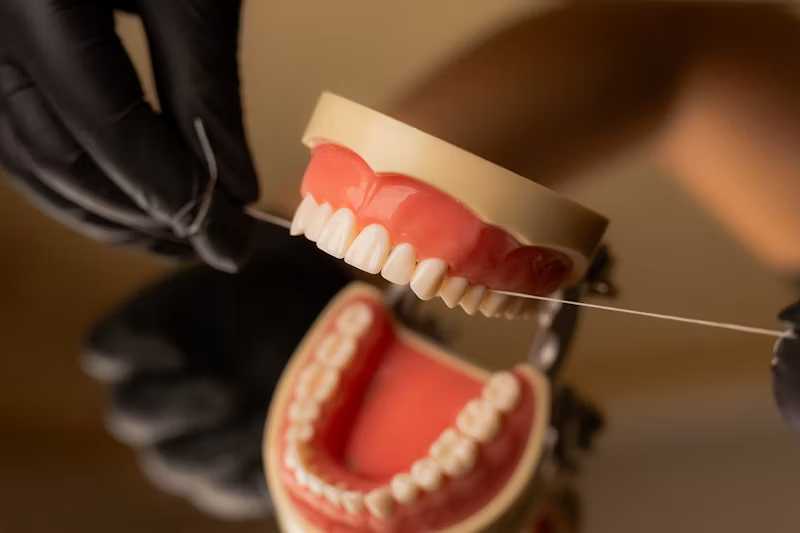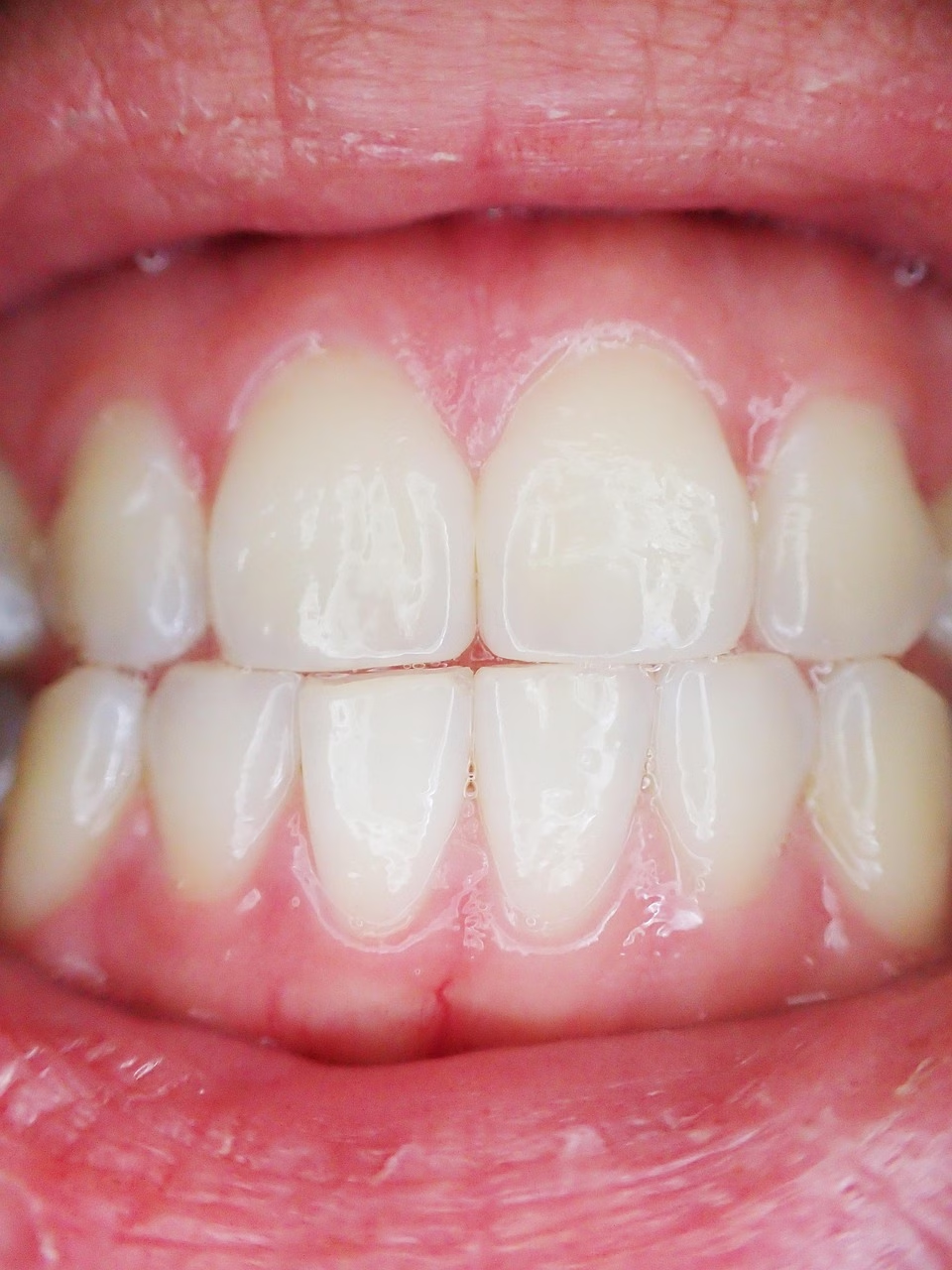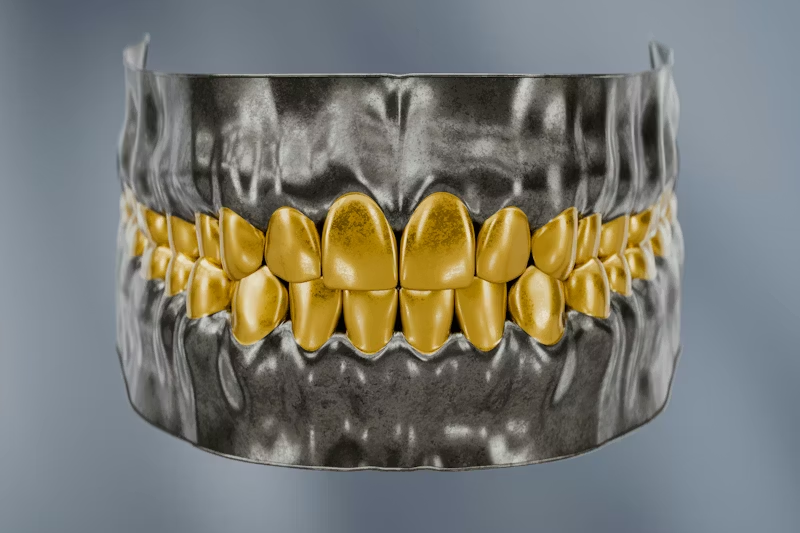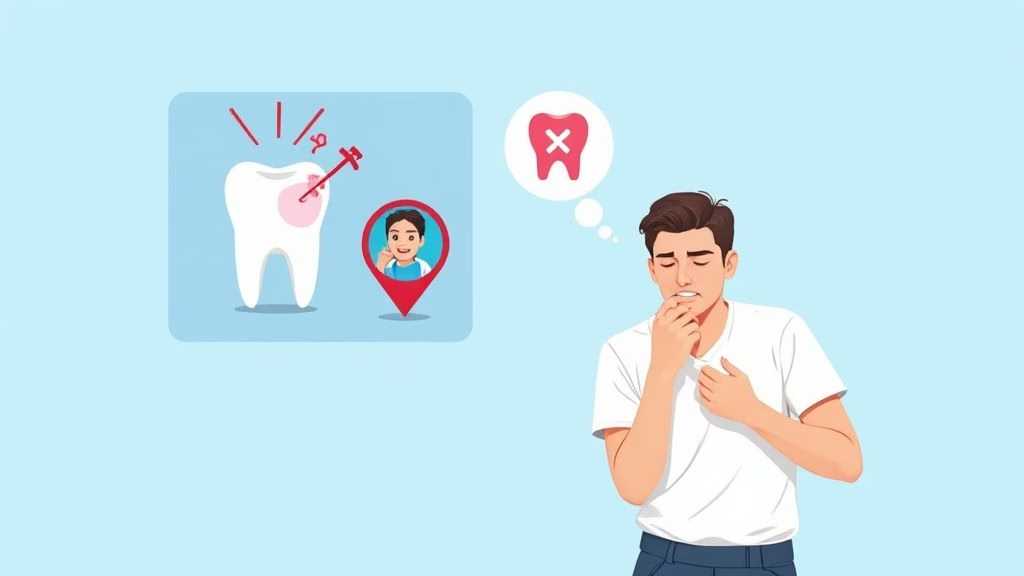How to Get Your Perfect Smile: The Complete Guide to Teeth Straightening Retainers

Understanding Your Retainer Options: Making the Right Choice
After investing time and effort in straightening your teeth, choosing the right retainer is essential for protecting your new smile. Each type of retainer offers distinct benefits and considerations. This guide will help you understand your options so you can make the best choice for your needs.
Exploring Retainer Types
There are two main categories of retainers: fixed and removable. Each type serves the same core purpose of maintaining tooth alignment, but they work in different ways.
- Hawley Retainers: These classic removable retainers use a wire across the front teeth and an acrylic base that fits against the roof of your mouth. While more noticeable than other options, they’re durable and can be adjusted as needed.
- Essix Retainers: Made of clear plastic, these invisible retainers fit snugly over your teeth like a thin mouthguard. They’re barely noticeable and comfortable to wear, though they may need more frequent replacement than Hawley retainers.
- Fixed Retainers: A thin wire permanently bonded behind your front teeth keeps them from shifting. These offer reliable, continuous protection but require extra care during brushing and flossing to prevent buildup.
Factors Influencing Retainer Choice
Your orthodontist will consider several key factors when recommending a retainer. The extent of your original tooth misalignment plays a major role, as does your daily routine and personal preferences.
- Treatment History: More extensive tooth corrections often need the stability of a fixed retainer or Hawley design. Minor adjustments may be maintained with an Essix retainer.
- Daily Habits: Your oral hygiene routine matters – if thorough cleaning might be challenging, removable retainers could be easier to maintain.
- Active Lifestyle: Athletes and active individuals might prefer removable retainers they can take out during sports or other physical activities.
Making an Informed Decision
The field of orthodontics has come a long way since its beginnings in the 1800s. Today, with over 4 million Americans currently in orthodontic treatment, the options for maintaining results have greatly improved.
Choosing your retainer is a long-term commitment worth careful consideration. Have an open discussion with your orthodontist about which option aligns best with your lifestyle and treatment goals. By understanding the features and requirements of each type, you can select a retainer that will effectively preserve your straight smile for years to come.
The Science of Smile Perfection: How Retainers Transform Your Teeth
Getting your teeth straightened with braces or clear aligners is just the first step toward your perfect smile. The real challenge lies in maintaining those results long-term. This is where teeth retainers play a vital role – they keep your newly aligned teeth in position and prevent unwanted shifting.
The Biological Mechanics of Tooth Retention
Periodontal ligaments hold Your teeth in place – small bands of connective tissue that attach your teeth to the jawbone. These ligaments work like tiny springs, allowing slight natural movement while keeping teeth secure. When you wear a retainer, it applies gentle, consistent pressure that helps these ligaments adapt to your teeth’s new positions.
When braces move your teeth, these ligaments stretch and compress in new ways. These ligaments can pull teeth back toward their original positions without proper support from retainers during the adjustment period. Regular retainer wear gives these tissues time to stabilize around the new tooth alignment.
The Role of Bone Remodeling
The success of retainers also depends on bone remodelling – your body’s natural process of breaking down and rebuilding bone tissue. After orthodontic treatment, your jawbone needs time to reform around your teeth’s new positions. Retainers provide the stability needed for this bone restructuring to occur properly.
Your jawbone is constantly changing through this remodelling process. When teeth are moved, the bone must adapt by building new tissue to support them. Wearing your retainer consistently during this phase helps ensure the bone rebuilds in a way that maintains your new smile.
Timing and Pressure: Key Factors in Retainer Success
The schedule for wearing retainers matters greatly in the first few months after treatment. Most orthodontists recommend full-time wear initially, gradually decreasing as your teeth stabilise. This careful timing allows both the ligaments and bone to adjust properly.
The specific pressure points created by your retainer are equally important. Each retainer is designed to maintain alignment through strategic contact with your teeth. Your orthodontist will select the most effective retainer type based on your unique dental structure and treatment results. For the best outcome, always follow your orthodontist’s guidance about retainer wear, especially if you’re using them to straighten teeth.
Overcoming Common Retainer Challenges: Expert Solutions That Work
Getting a retainer is a great first step toward achieving a straighter, healthier smile. While wearing a retainer takes some adjustment, understanding common challenges and their solutions can help you stay on track. Let’s explore practical ways to make your retainer journey more comfortable and successful.
Managing Initial Discomfort
When you first start wearing a retainer, some soreness is perfectly normal as your mouth adapts. To help ease any discomfort, try taking over-the-counter pain medication or doing gentle salt water rinses. Make sure your retainer fits properly – if pain persists or feels excessive, your orthodontist can check the fit and make adjustments as needed.
Speaking Clearly With Your Retainer – e.g. Lisps
A temporary lisp when starting with a retainer is common but entirely manageable. The key is practice – spend time reading aloud, having conversations, or even singing to help your tongue adjust to speaking with the retainer in place. Most people find their speech returns to normal within a few days or weeks of consistent practice.
Maintaining Proper Oral Hygiene
Good cleaning habits are essential for both your retainer and teeth. Clean your retainer thoroughly each time you brush your teeth and soak it in a cleaning solution as recommended. Keep up with regular brushing and flossing, paying special attention around the retainer. Skipping these steps can lead to plaque buildup and potential dental problems.
Integrating Retainer Wear Into Your Daily Routine
Consistent retainer wear is crucial for maintaining your results. Studies show that 25% of orthodontic patients don’t follow their recommended wear schedule, which can undo their progress. Learn more about wear compliance here: Orthodontic Retainer Statistics
Pick a specific spot to keep your retainer case and set daily reminders on your phone. Make retainer wear part of your daily routines, just like brushing your teeth. Having a set place and time makes it much easier to remember.
Building Consistent Wearing Habits
Success with retainers comes down to forming good habits. Try setting small rewards for meeting wear goals or partner with a friend or family member for accountability. Focus on the end goal – keeping your newly straightened smile for life. Remember that getting through these initial adjustments is worth the lasting results.
Mastering Retainer Maintenance: Your Guide to Long-Term Success
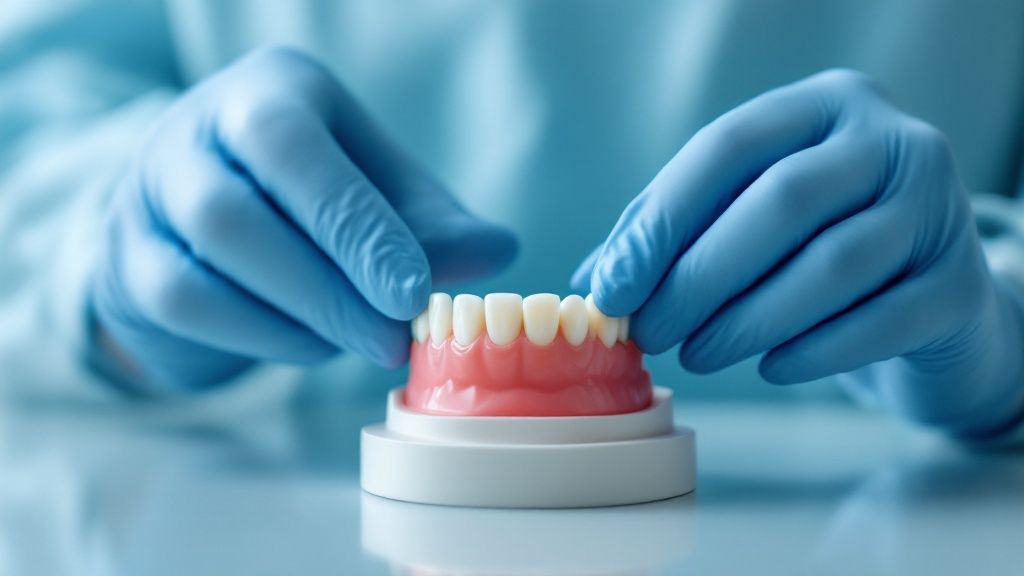
Getting your teeth straightened is a significant investment in your smile. To protect that investment, proper retainer care is essential. By following some key maintenance practices for cleaning, storage, and monitoring wear, you can keep your retainer working effectively for years to come.
Effective Cleaning Techniques for Your Retainer
Just like your teeth need daily cleaning, your retainer requires consistent care to prevent bacteria buildup and maintain its shape. Without proper cleaning, your retainer can develop plaque, cause bad breath, and even affect how well it holds your teeth in position.
Here’s how to keep your retainer clean and hygienic:
- Daily Gentle Brushing: Use a soft toothbrush and mild toothpaste to remove food particles and plaque after each wear carefully
- Regular Deep Cleaning: Soak your retainer in a specialized cleaning solution like those from Toothfairy to thoroughly disinfect and remove stubborn debris
- Temperature Control: Stick to cool or lukewarm water – hot water can warp the plastic and ruin your retainer’s fit
Safe Storage Practices for Your Retainer
Proper storage is crucial for preventing damage and maintaining cleanliness when you’re not wearing your retainer. Many people damage their retainers simply by not storing them correctly.
Keep these storage tips in mind:
- Use the Case: Always place your retainer in its protective case when not in use – this prevents accidental damage and keeps pets from mistaking it for a toy
- Keep It Clean: Wash the storage case regularly with soap and water, letting it air dry completely to prevent bacterial growth
Identifying Wear and Tear: When to Replace Your Retainer
Like any dental appliance, retainers eventually show signs of wear. Knowing what to look for helps you maintain proper tooth alignment:
- Check for Damage: Examine your retainer regularly for cracks or breaks that could affect its function
- Watch for Stains: While minor discolouration is normal, significant staining may indicate inadequate cleaning
- Monitor the Fit: If your retainer feels loose or doesn’t fit snugly, it may no longer be holding your teeth properly
Remember to see your orthodontist for regular checkups. They can professionally assess your retainer’s condition and let you know if it’s time for a replacement. By following these maintenance practices consistently, you’ll help ensure your straightened smile stays beautiful for years to come.
Smart Investment: Understanding Retainer Costs and Coverage Options
Maintaining your new smile after braces or aligners requires ongoing attention to retainers. Making smart financial decisions about retainer costs and coverage helps protect your orthodontic investment for years to come. Let’s explore the typical expenses, insurance benefits, and practical ways to manage the financial aspects of retainer care.
Decoding Retainer Costs: What to Expect
The cost of retainers varies based on several key factors. Type of retainer, case complexity, and orthodontist fees all impact the final price.
- Hawley retainers are often the most affordable choice
- Clear retainers (Essix) cost moderately more but offer better aesthetics
- Fixed retainers typically have higher upfront costs due to the bonding procedure
Remember to factor in potential replacement costs if retainers are lost or damaged over time.
Exploring Insurance Coverage for Retainers
Many dental plans provide some level of orthodontic coverage that includes retainers. Coverage amounts differ between plans – some may pay a percentage of retainer costs while others have lifetime maximums for all orthodontic care. Contact your insurance provider to understand your specific benefits, including deductibles, co-pays and waiting periods. This helps you estimate actual out-of-pocket expenses.
Maximizing Your Benefits and Minimizing Costs
Several approaches can help reduce your overall retainer expenses:
- FSAs and HSAs: Using pre-tax dollars from these accounts for retainers can lower your costs
- Payment Plans: Many orthodontists offer monthly payment options to make costs more manageable
- Provider Discussions: Talk openly with your orthodontist about costs – they may offer discounts for paying upfront
- Proper Care: Following cleaning and storage guidelines using products like those from Toothfairy helps retainers last longer and avoids replacement costs
Long-Term Value: Investing in Your Smile
While retainers have upfront costs, they protect your orthodontic investment by preventing teeth from shifting back. This helps avoid more expensive orthodontic treatment later. Proper retainer care and maintenance now creates lasting value by preserving your straight, healthy smile for years to come.
Building Lifelong Success: Strategies for Perfect Retainer Compliance
Keeping your newly straightened teeth looking great means wearing your retainer consistently. While this may seem simple, turning retainer wear into a natural daily habit takes conscious effort and the right approach. Here’s how to build rock-solid retainer habits that will protect your smile for years to come.
The Psychology of Habit Formation
Like any new routine, consistent retainer wear requires strategy and dedication before it becomes automatic. The key is connecting your retainer routine to habits you already have in place. For example, putting in your retainer right after brushing your teeth at night creates a natural link that makes remembering easier. Research shows it takes about 66 days for a new behavior to become automatic, so stay patient as you build this crucial habit.
Practical Strategies for Consistent Wear
Several proven techniques can help cement your retainer routine:
- Visual Reminders: Keep your retainer case somewhere you’ll see it often, like next to your toothbrush
- Digital Alerts: Set recurring phone reminders for your wear schedule
- Progress Tracking: Mark each day of wear on a calendar or habit-tracking app
- Small Rewards: Celebrate hitting wear-time milestones to reinforce the habit
- Support System: Tell a friend or family member about your retainer goals for added accountability
Maintaining Your Routine Through Life Changes
Life’s disruptions – from travel to major transitions – can throw off established habits. Here’s how to stay on track:
- Travel Tips: Always pack your retainer in carry-on luggage with cleaning supplies
- Special Events: Plan ahead for meals and drinks by bringing your case
- Big Life Changes: Add extra reminders during stressful transitions like moves or new jobs
Adapting Your Retention Plan as You Age
Your retention needs may shift over time, just as your body changes. Regular orthodontist check-ups are essential to ensure your retainer still fits properly and provides optimal results. Your orthodontist can adjust your wear schedule or recommend replacements when needed.
By combining smart psychology with practical tools, you can make retainer wear a natural part of your daily life. A consistent retainer routine protects your investment in a beautiful smile while maintaining your oral health for the long term.
Ready to make retainer care even simpler? The Toothfairy app provides convenient tracking tools and support to help you maintain a healthy, beautiful smile. Learn more about how Toothfairy can simplify your retainer journey.
Last updated on February 3, 2025

Kian Dhinsa
Dr. Kian Dhinsa is a Birmingham-based dental practitioner with a special interest in orthodontics, general dentistry, and and surgery.
He has been recipient of numerous awards, for dental care and digital innovation.
Kian Dhinsa
Dr. Kian Dhinsa is a Birmingham-based dental practitioner with a special interest in orthodontics, general dentistry, and and surgery. He has been recipient of numerous awards, for dental care and digital innovation.

